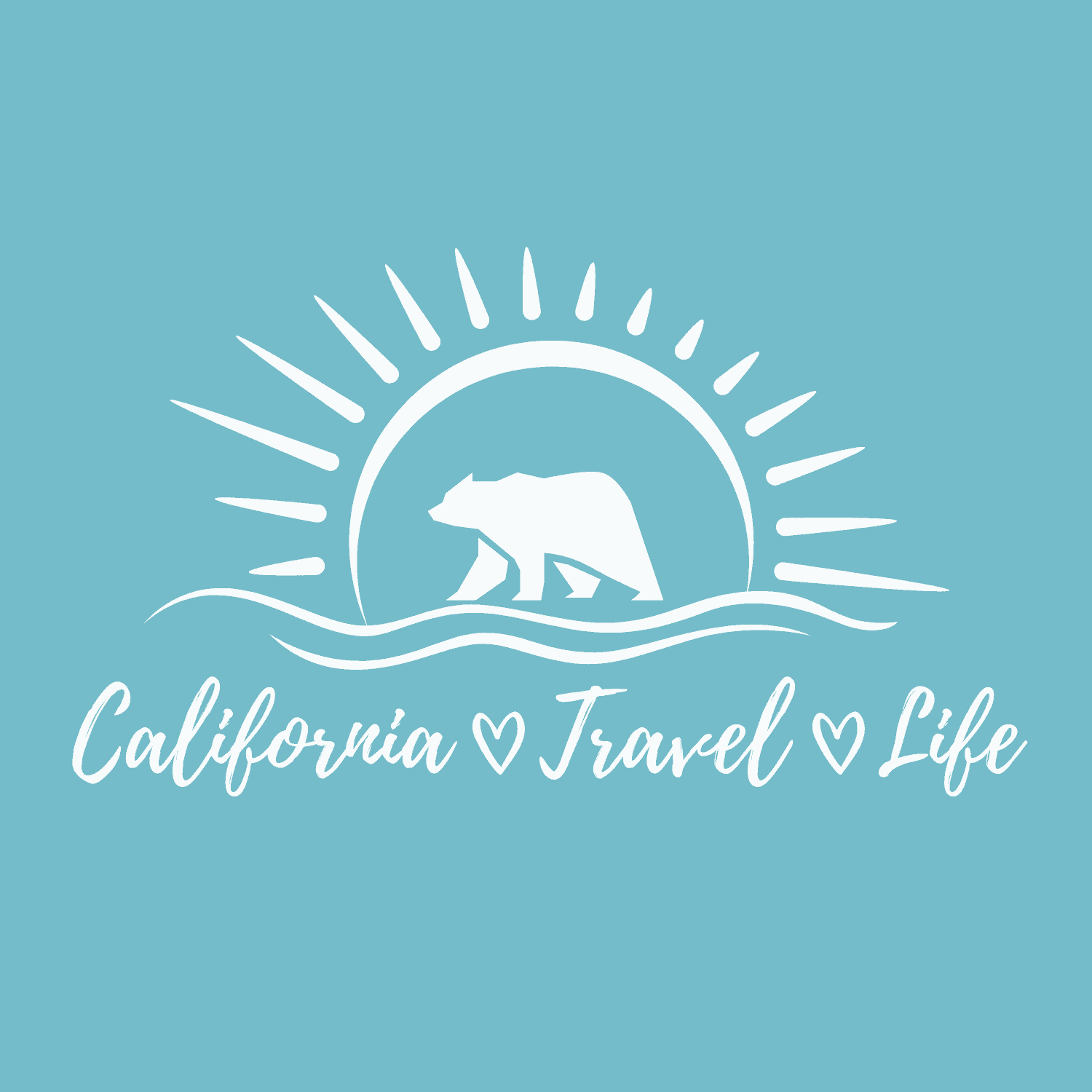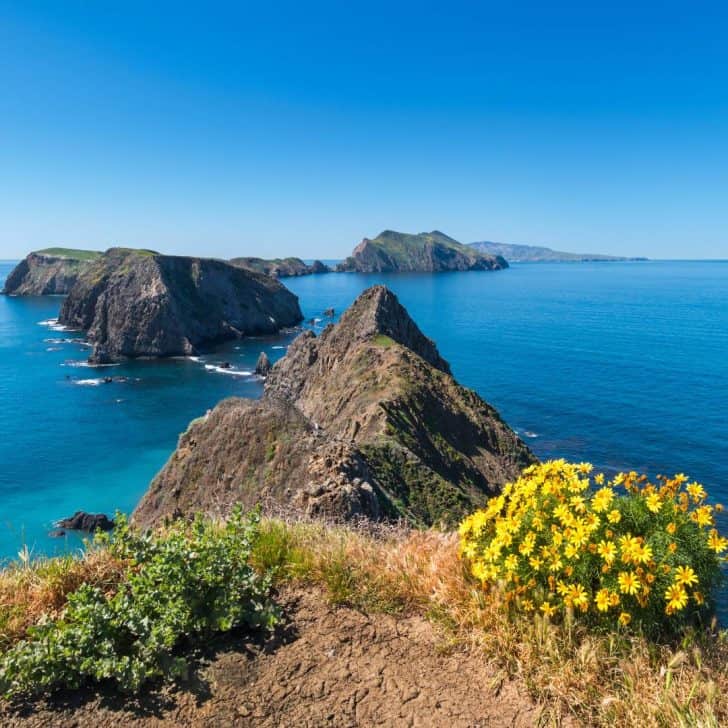LA can sometimes feel like a never-ending sprawl of concrete but thankfully, there are 12 national parks near Los Angeles where you can get away from it all. All of these parks can be reached in about five hours or less, and a couple are right down the road!
From the rugged Channel Islands to the desert parks of the Mojave to the peaks of the High Sierra, here aer 12 parks that remind us why we live in the Golden State.
National Parks Near Los Angeles
Santa Monica Mountains National Recreation Area
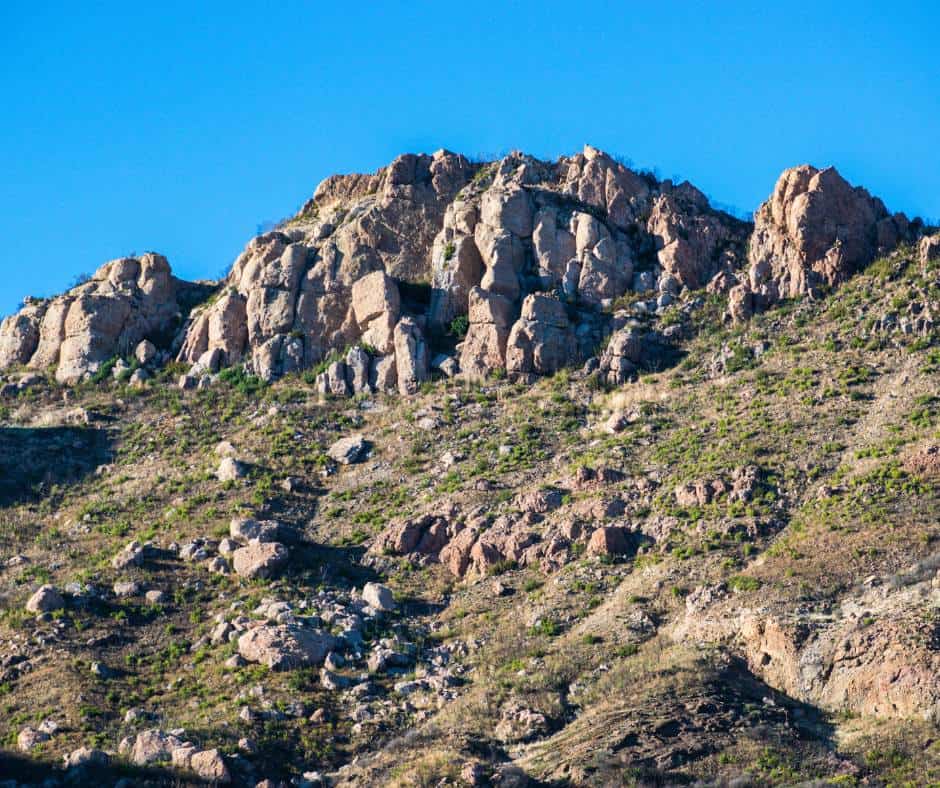
Distance from Los Angeles: Some of the park is within city limits!
The closest national park to Los Angeles is the Santa Monica Mountains National Recreation Area. This national parks covers over 150,000 acres, making it one of the largest urban parks in the world.
Unlike many national park units, it encompasses a variety of destinations like Franklin Canyon, Paramount Ranch, Solstice Canyon, and Circle X Ranch. It also works in collaboration with many of the surrounding state parks and beaches like Point Mugu State Park, Malibu Creek State Park, Will Rogers State Park and Leo Carillo State Park.
The beaches along the coastline that falls under the national recreation area near Malibu are perfect for swimming, sunbathing, and surfing. Point Mugu and Zuma Beach are two popular spots where you can catch some waves or sunnbathe, while Leo Carillo is a fun place to go tide pooling
There are over 500 miles of trails inside the Santa Monica Mountains National Recreation Area and the Backbone Trail is perhaps the most impressive of them all.
This 67-mile trail traverses the entire park and offers incredible views of the Santa Monica Mountains and the Pacific Ocean. Most people choose to pick a segment of the trail to enjoy. It is especially colorful in the spring when the hills are green and wildflowers are in bloom.
The Split Rock Trail (3.5 miles RT) and the Solstice Canyon Trail (2.1 mile RT) are two more popular trails that we recommend, especially if you want to hike with your dog. Split Rock is at the Circle X Ranch while the Solstice Canyon Trail leads hikers to a waterfall and ruins of an old cabin.
2. Channel Islands National Park
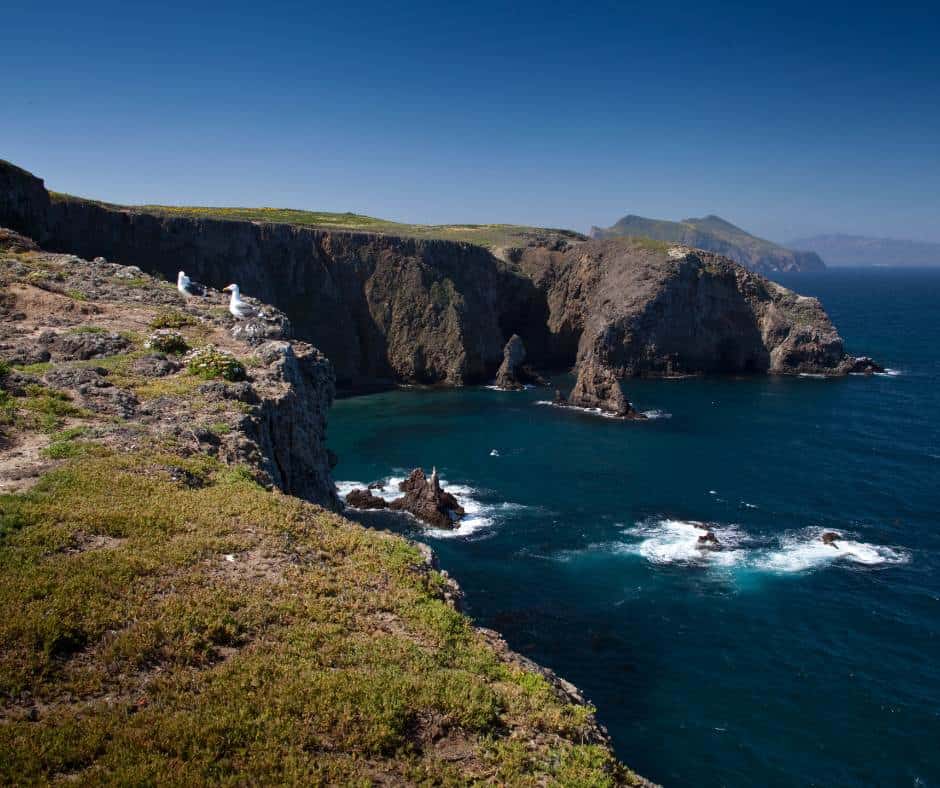
Distance from Los Angeles: 65 miles (About 90 minutes with traffic)
The Channel Islands National Park Visitor Center in Ventura is only about 90 minutes from LA, but this national park is still one of the least visited in the West. Only about 400,000 people take a boat trip out to one of the five islands that make up this special place.
Skipping this national park is a mistake, especially if you are wondering what the California coast might have been like generations ago. Of the five islands, Anacapa and Santa Cruz Islands are the most visited and can easily be done as a day trip..
In order to visit you will need to book a trip with Island Packers, the park’s authorized concessionaire. This boat ferry company has several different options, including itineraries that are suited for campers.
Sea kayaking is one of the best things to do at Channel Islands National Park. Santa Cruz Island is the most popular place for sea kayaking because of its incredible sea caves, which are some of the largest in the world. Painted Cave off Santa Cruz Island is about 1,215 feet in length and up to 160 feet in some points. Santa Barbara Adventure Company offers great sea kayaking tours.
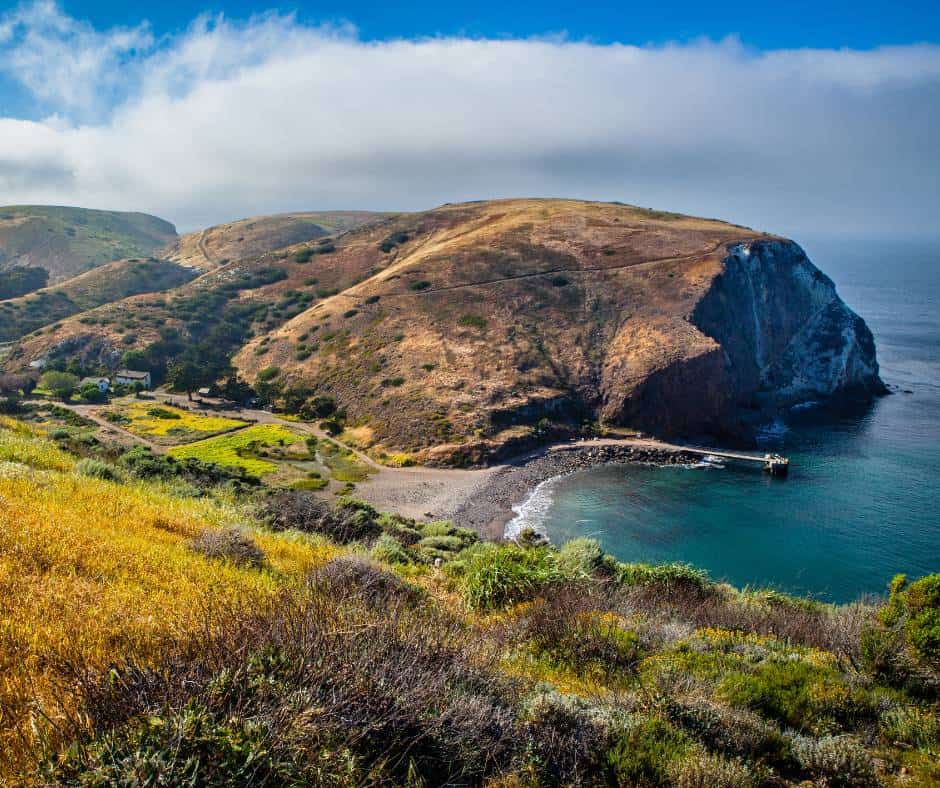
Scorpion Anchorage, on the eastern end of Santa Cruz Island, is home to a cluster of sea caves that can be explored by kayak or boat tour. These caves vary in size and shape, and some have openings large enough to allow boats to enter. The caves provide a chance to observe marine life and experience the natural wonders of the island’s coastline.
Snorkeling is another activity at Channel Islands. The water is cold, so wetsuits are highly encouraged. The kelp forests surrounding the islands are amazing and full of sea life.
The waters around Scorpion Anchorage provide excellent snorkeling opportunities. You can explore the kelp forests and rocky reefs, encountering a variety of marine life such as colorful fish, sea stars, anemones, and maybe even some playful sea lions.
Frenchy’s Cove, located near the landing area at Anacapa Island, is a popular spot for snorkelers. You can explore the kelp forests and swim alongside fish and other marine life. The nearby Arch Rock is also a beautiful area to snorkel around.
Hikers will want to visit during wildflower season in the spring. The bright yellow brilliant yellow coreopsis flowers are showstoppers. Keep your eyes out for the tiny Channel Island fox which stands at just a foot tall and weighs only 4-5lbs.
Spend the night: If you want to stay the night on one of the Channel Islands, you will have to camp and it is pack in, pack out. If you would rather spend the night close to Ventura Harbor and get an early start for a day trip, check out the Holiday Inn Express which is right on the harbor and walking distance to Island Packers.
Joshua Tree National Park

Distance from Los Angeles: 130 miles, about 2.5 hours
Joshua Tree National Park is one of the best national parks near Los Angeles to visit in the spring. After a rainy winter he desert comes to life with a riot of color, with blooming cacti, desert marigold and primrose, and mojave aster among the flowers you will encounter.
Of course, Joshua Tree is a special place to visit in the fall and winter as well (I would avoid the sweltering summers). With its towering boulder piles and iconic namesake trees, and plethora of hiking trails, it is a park you will find yourself returning to again and again.
Joshua Tree National Park is where two different deserts- the Mojave high desert and the Colorado low desert- meet, offering two distinct desert environments to explore. Most of the most iconic and popular activities are in the high desert portion of the park, like rock climbing and bouldering.
With over 800 miles of trails inside the park, visitors can choose from easy nature walks to more strenuous hikes up rocky terrain. Here are a few of our favorites:
- The trail to Barker Dam is a 1.1-mile loop trail with plenty of boulders to climb on, prehistoric rock art, and even the occassional appearance by desert bighorn sheep.
- If you want more of a challenge, hike the 1.5-mile trail to the top of Ryan Mountain. It gains 1,000 feet in elevation in that short distance, but the 360-degree views of the park from the 5,461′ summit are worth the effort.
- The Arch Rock Nature Trail is a short, easy 0.5-mile loop located near the White Tank Campground. The trail leads to a natural arch known as Arch Rock, which is formed by wind and water erosion. There is also a boulder shaped like a heart nearby.
- The Split Rock Loop Trail is a 2-mile loop that takes you through a diverse desert landscape. It winds through unique rock formations and offers an up-close look at Joshua trees, ocotillos, and other desert flora.
More attractions inside Joshua Tree that you won’t want to miss include Skull Rock, taking the ranger-guided Keys Ranch tour, bouldering in Hidden Valley, and the sprawling vistas at Keys View.
Check out our epic Joshua Tree National Park day trip itinerary.
Spend the night: All accommodations inside the national park are campgrounds. If you prefer four walls, you can choose to stay at one of the many hotels and resorts in the Palm Springs area or go my preferred route and book a funky home in Joshua Tree via VRBO. There are some really cool options!
Cabrillo National Monument
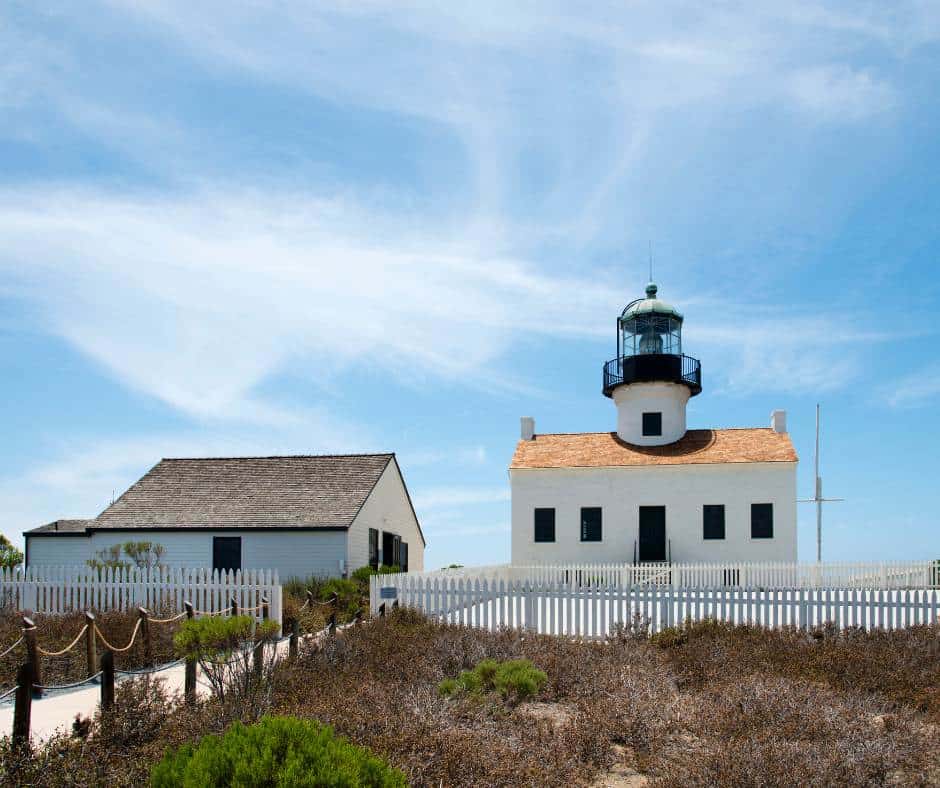
Distance from Los Angeles: 125 miles, about 2.5 hours
Located in San Diego on the southern tip of the Point Loma Peninsula is Cabrillo National Monument, a place to experience the natural beauty and history of the region.
This historic site commemorates the arrival of Juan Rodriguez Cabrillo, the first European to set foot on the West Coast of the United States in 1542. There is a statue as well as a museum with exhibits explaining the history of the region, including the Kumeyaay people who have lived in the area for thousands of years. But wait, there’s more!
The monument is also home to Old Point Loma Lighthouse, one of the eight original lighthouses built on the West Coast. It operated from from 1855 to 1891 helping ships enter the San Diego Bay.
There are also some natural attractions to enjoy at this park. Tidepooling is very popular at low tide, and visitors can see a wide variety of sea life, including anemones, crabs, and starfish. Gray whales can also be spotted just off Point Loma from December through March during the migration to and from their birthing grounds off the coast of Mexico.
There are also several hiking trails that lead visitors through the park’s diverse landscape. The Bayside Trail is a great option if you are looking for sweeping views of the bay and downtown San Diego. It is an easy, 2.5-mile trail and there are several interpretive panels that provide information about the local history, marine life, and the unique ecosystems of the area.
Spend the night: There are so many great lodging options in San Diego. I love the location and suite-style rooms at the Embassy Suites in downtown San Diego. If you are looking for a more resort-style stay, check out Paradise Point Resort on Mission Bay.
Carrizo Plain National Monument
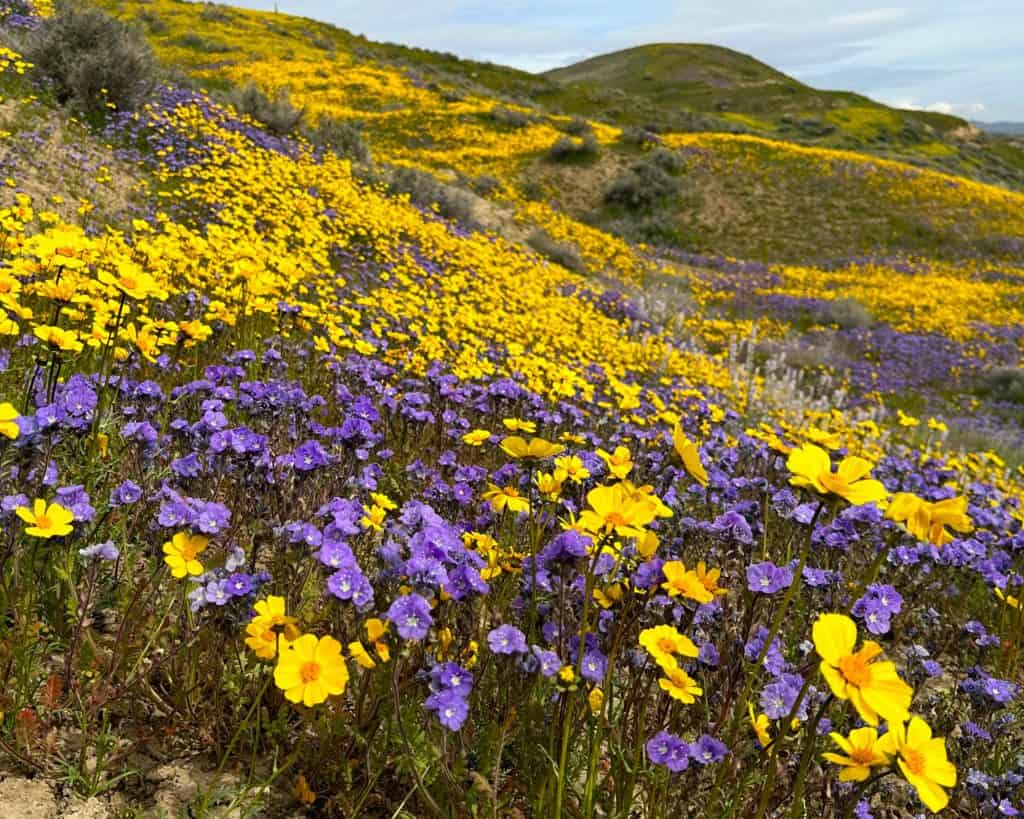
Distance from Los Angeles: 150 miles, three hours
After all the rain we received this past winter, I knew it was time to make the journey out to Carrizo Plain National Monument, known for its incredible wildflower displays. The park is quite remote, but getting there was easy. It is just over the Grapevine from LA metro.
The park is located in the rolling hills that separate the Central Valley from the coast and protects the largest native grassland left in the state of California. The main road through the park is partially paved, but we had zero issues navigating the dirt portion of the road in our Tesla.
The wildflowers here definitely live up to the hype and I was impressed by the sheer diversity of flower types. Color tends to peak in late March through April and include yellow daisies, owl’s clover, goldfields, coreopsis, baby blue eyes, tidy tips, poppies, and phacelia.
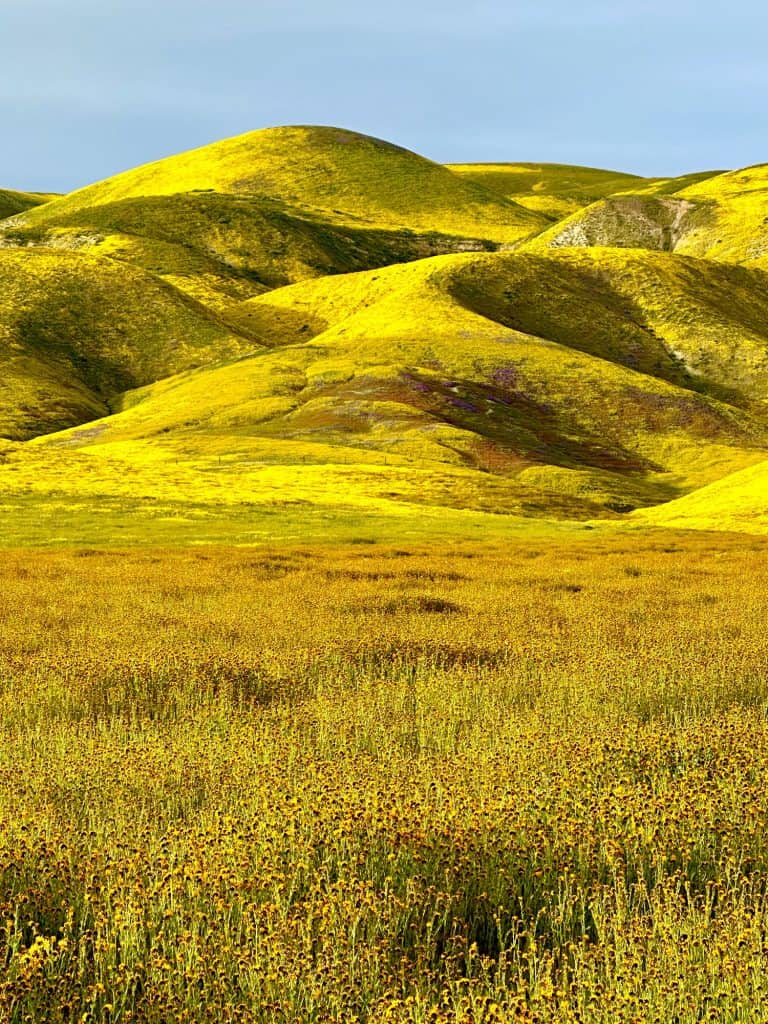
If you have a four-wheel drive vehicle you will want to definitely take some of the other dirt roads throughout the park including Caliente Ridge, Shell Creek Road, and Seven Mile Road to see even more blooms.
While most people who visit the park tend to do more driving tours than hiking, there are some great trails to enjoy. The Caliente Ridge Trail provides stunning views of the surrounding hills and valleys rom above. If you want to walk on the famed San Andreas Fault, take the 1.3-mile Wallace Creek Trail.
Take time to visit Soda Lake, which reflects the wildflowers on its waters. You can also visit Painted Rock, an ancient Native American site with pictographs and petroglyphs. Visitors can take a guided tour of the site to learn more about its history and cultural significance.
Carrizo Plain National Monument is one of the few places in Califoria where you have a chance of spotting pronghorn antelope. They were once the most common big game animal in California’s Central Valley, but overhunting during the Gold Rush era and agricultural development drastically reduced their range and numbers. There are also elk inside the park.
Spend the night: If you want to stay inside the park, you need to camp and there are very limited services. We chose to spend the night at the Best Western Plus in Taft, a small oil town that offers some of the closest lodging to the park. Rooms were clean and breakfast was included.
Mojave National Preserve
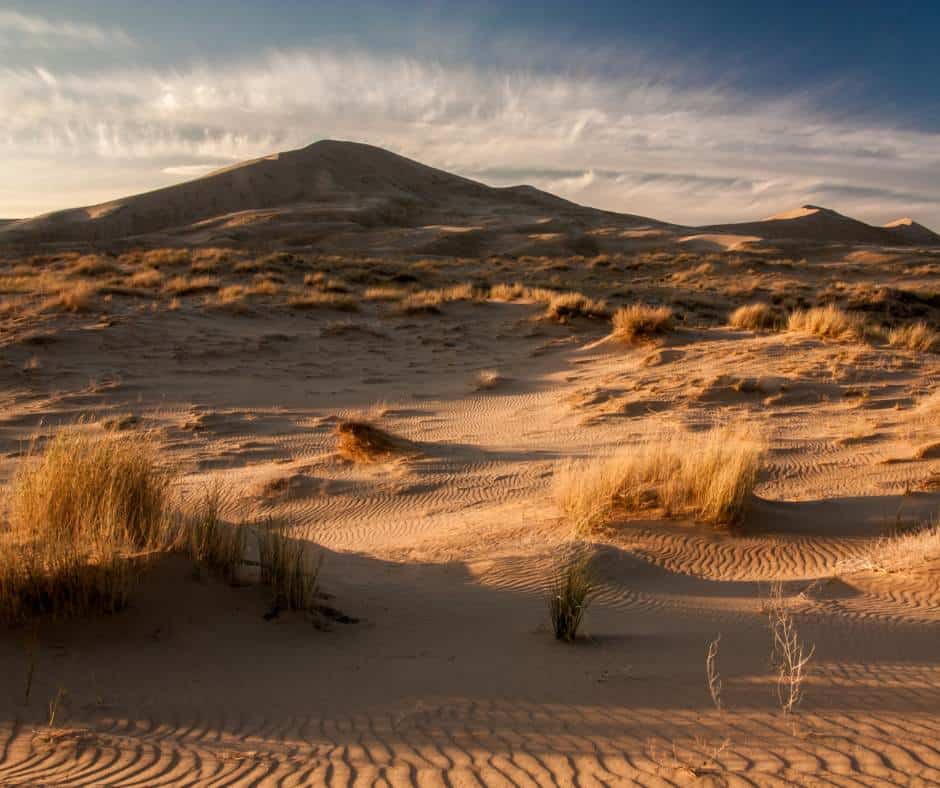
Distance from Los Angeles: 194 miles, about three hours
Mojave National Preserve protects over a million acres of the Mojave Desert in between Interstate 15 and Interstate 40, close to the California/Arizona border.
The park is home to Kelso Dunes, some of the largest sand dunes in the country. These massive dunes rise 600 feet above the desert floor. There is a three-mile trail around the dunes, but we think it is far more fun to just climb, slide, snowboard, or even roll down the dunes.
You can also make the dunes “sing”. They make a deep sound when a large amount of sand is pushed off the top of the dunes in hot weather. This is best accomplished with a group in synch with one another.
Another great spot to visit inside the preserve is Mitchell Caverns. The park service offer guided tours of an underground cave system. Visitors can explore the unique rock formations and learn about the geological history of the area.
Here are 25 awesome caves in California to explore.
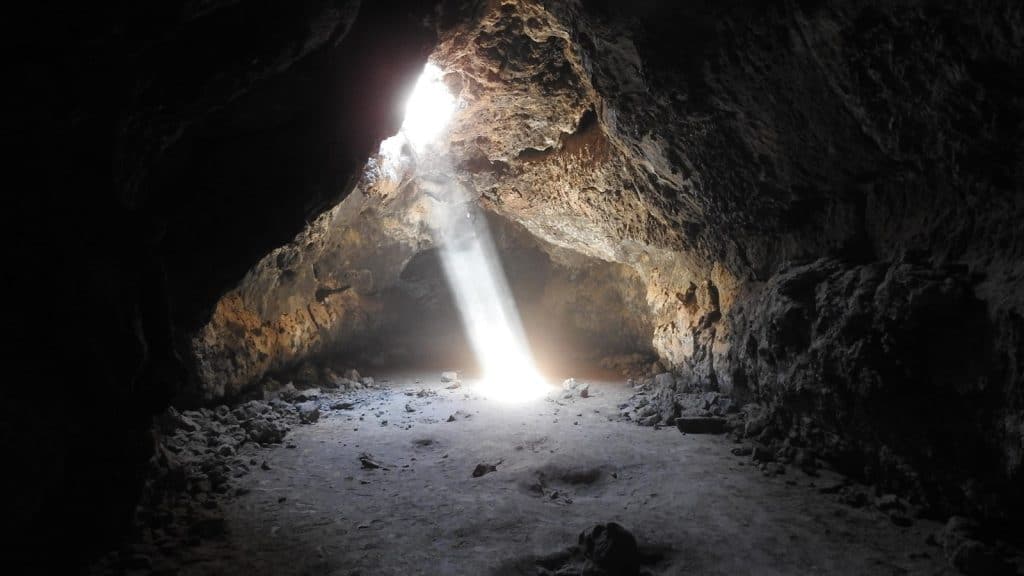
You will also want to check the park’s lava tube. It was created by molten lava 27,000 years ago. There is a beam of light that shines into the lava tube at certain times of day (usually early afternoon in the summer), begging to be photographed.
If you are a hiker who enjoys a bit of adventure, check out the the 1.5-mile Hole-in-the-Wall Rings Trail where you can use the rock-mounted ringbolts to climb into the rocky amphitheater at the bottom of Banshee Canyon.
As you can imagine, Mojave National Preserve can get very hot in the summer, so winter and shoulder season visits are the most enjoyable.
Castle Mountains National Monument
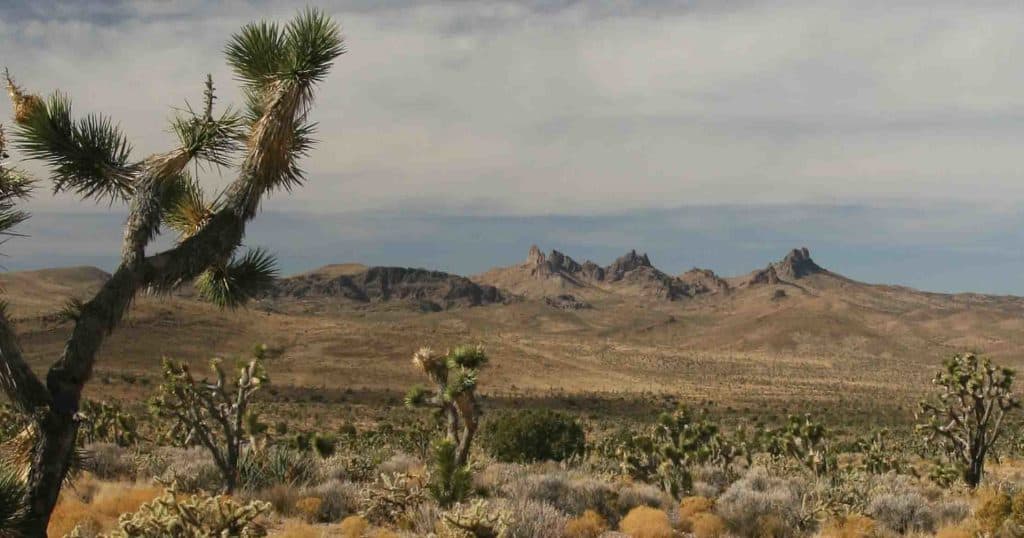
Distance from Los Angeles: 250 miles, about 4.5 hours
Castle Mountains National Monument is likely a national park you haven’t about yet. It established in 2016, is located two hours east of Barstow. It protects 21,000 acres of desert northwest of the Colorado River in between Interstates 15 and 40; basically the small section of desert that Mojave National Preserve didn’t previously protect.
The park is home to Joshua trees, rare desert grasslands, seasonal desert wildflowers, and even pinyon-juniper forest at the highest elevations. It also protects the habitat for a variety of wildife including for desert bighorn sheep, mountain lions, bobcats, golden eagles, gila monsters, and desert tortoise.
This park is only accessible by dirt roads, so a four-wheel-drive, high clearance vehicle is recommended. There are no maintained trails and you are welcome to hike where you want. There are abandoned mines and ghost towns to explore like the Hart Mine, the Oro Belle Mine, and the restored Hart Homestead, which provides a glimpse into life in the desert in the early 1900s.
Another one of the highlights of the monument is the Castle Mountains themselves, which offer stunning views of the surrounding desert landscape. The Castle Mountains are a popular destination for hikers and provide a challenging but rewarding hike to the summit.
Here is a good article on visiting this remote national monument.
Spend the night: This national monument is close to Lake Havasu so staying in Bullhead CIty is your best bet.
Death Valley National Park
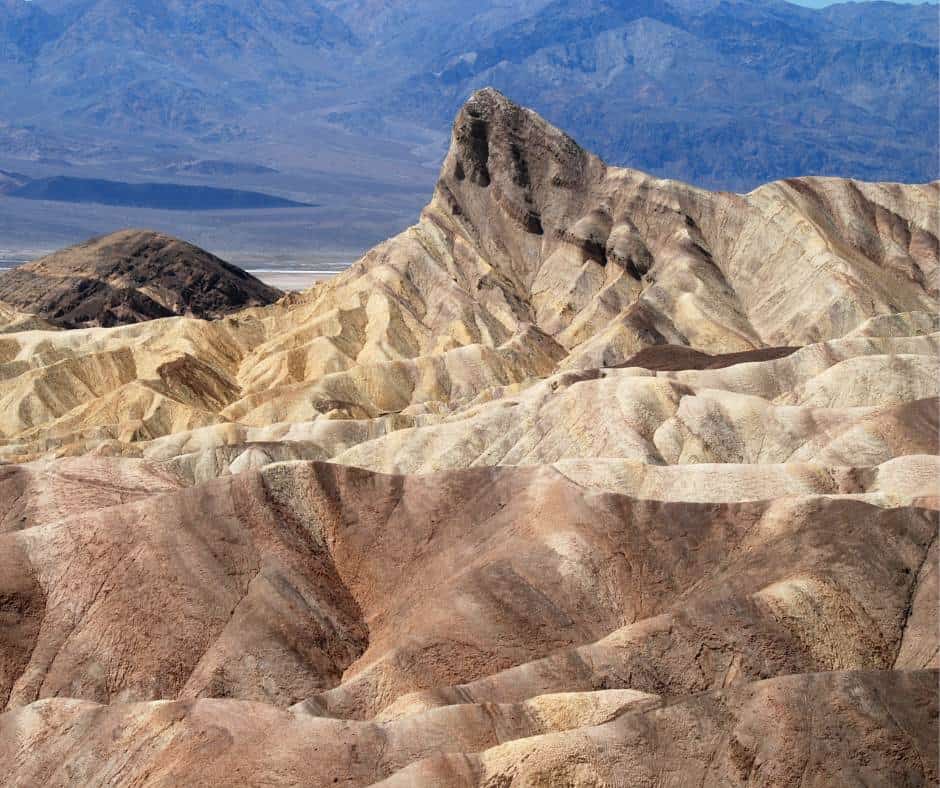
Distance from Los Angeles: 250 miles, about 4.5 hours
You have likely driven past the exit to Death Valley several times on your trek towards Vegas on Interstate 15, but have you ever actually taken the time to visit? If you haven’t, you should! Don’t get turned off by the word “death” in the name. Or the news reports of 120+ degree temps during heat waves in July. This place is special!
Death Valley National Park is 3,422,024 acres in size, making it the largest national park outside of Alaska. And while Death Valley is well known for its fiery summer temperatures which can exceed 130 degrees during a heat wave, it is a delightful and scenic place to visit during the winter, late fall, and early spring when the weather is mild.
This is a park of stark contrast. Badwater Basin, the lowest spot in North America at -282 feet, is impressively offset by Telescope Peak looming 11,331 feet above just 15 miles away.
It is home to rare fish that can survive swimming in a spring-fed creek that warms up to 90 degrees in the summer, sand dunes that will knock your socks off, dark skies where you can see the Milky Wave, and lots of great canyons to explore.
And despite the ominous name, there is actually lots of wildlife in this park. Here are 24 animals in Death Valley that you may encounter on your visit.
Unlike most national parks, you aren’t required to stay on marked trails while you explore. As a matter of fact, many places don’t have trails at all! We love to explore Golden Canyon, Sidewinder Canyon, and Mosaic Canyon. Other park destinations you don’t want to miss include Zabriski Point, Artist’s Drive, and the Devil’s Golf Course.
Spend the night: Death Valley is huge so staying inside the park will help you spend a couple days exploring. The Ranch at Death Valley is a great place for families with activities like shuffleboard, swimming, and horseback rides, on site. The Furnace Creek visitor center is just steps away. The Inn at Death Valley is a more upscale option that will appeal to couples and golfers.
Sequoia National Park
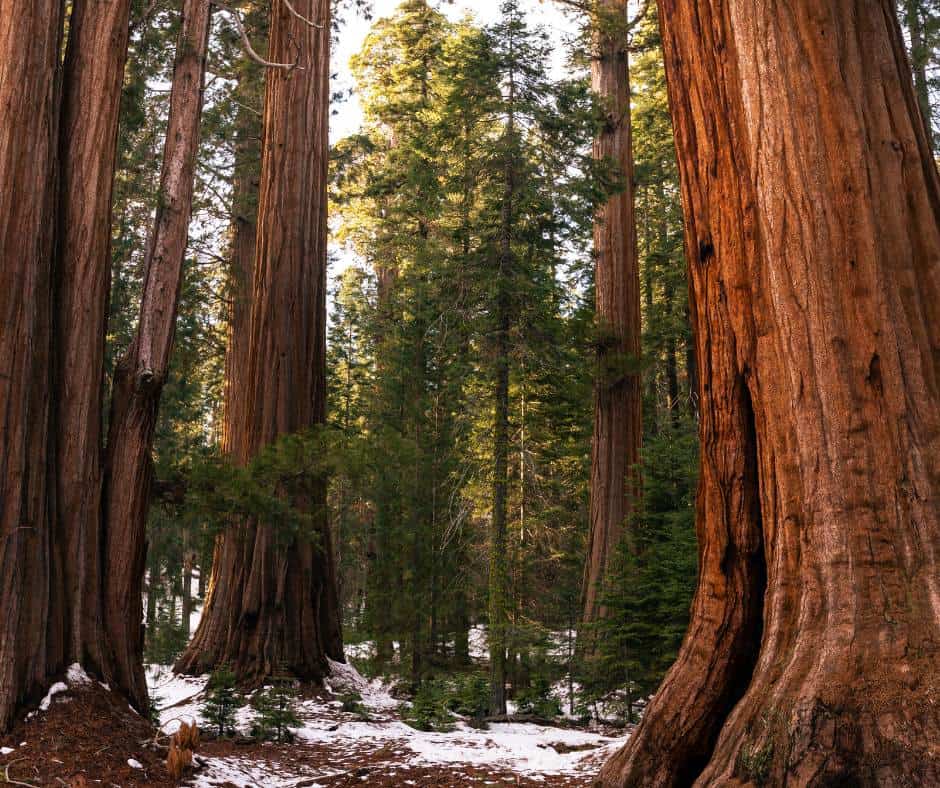
Distance from Los Angeles: 225 miles, about 4.5 hours
In my opinion, Sequoia National Park is a little underrated. It sits in the shadow of Yosemite which is just down the road, but I prefer a visit to Sequoia in the summer over Yosemite because it is far less crowded and still has plenty of incredible scenery to offer beyond its namesake trees (which are reason enough to visit).
One of the main attractions in Sequoia National Park is the General Sherman Tree, the largest known living single-stem tree on earth. Visitors can hike through the Giant Forest, which has more than 8,000 sequoia trees. The further you hike away from General Sherman, the fewer people you will encounter.
If you haven’t stood at the base of a sequoia tree, make it a priority. Pictures just can’t do these behemoths justice. The trees are simply magical, and feel like they are the brainchild of a fantasy writer. They are unlike anything else in nature.
Beyond the impressive trees, this park is filled with great hiking and plenty of epic Sierra Nevada scenery. Don’t miss the trail to Tokopah Falls which follows the refreshingly cold Marble Fork of the Kaweah River. The trailhead starts at the Lodgepole Campground and we have seen black bears either in the campground or on the trail on every visit.
Another popular attraction is Moro Rock, a granite dome that offers sweeping views of the surrounding landscape, including the Great Western Divide. If you are a backpacker, head to Mineral King and enjoy some of the most magical trails in the High Sierra.
Sequoia National Park is also home to Crystal Cave, which is open for cave tours seasonally. The tours are popular, and it is recommended that you purchase tickets two months in advance of your visit. It is a 1/2-mile walk down the hill to the Crystal Cave entrance. Be sure to bring a sweatshirt because it is a constant 50 degrees inside the cave.
Important Note: Sequoia National Park was heavily impacted by the extreme winter weather this year combined with the massive fire that hit the area in 2021. Crystal Cave for the 2023 season due to damage to the road and trails but is expected to open in 2024. The Mineral King area is also closed in 2023 due to road damge.
Spend the night: I really enjoyed our stay at the centrally located Wuksachi Lodge inside the park. Camping at Lodgepole Campground is a geat option as well.
Kings Canyon National Park
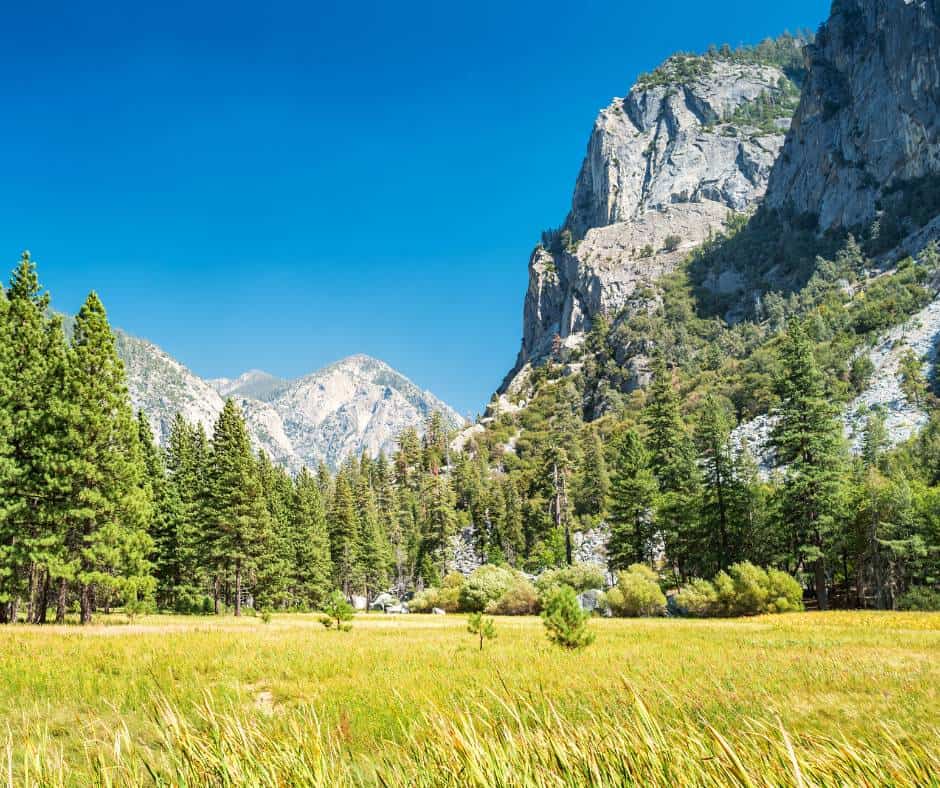
Distance from Los Angeles: 250 miles, 4.5-5 hours
The sister park to Sequoia is King Canyon, a national park that in many ways, feels like two distinct parks. It is home to Grant Grove, an impressive Sequoia Grove that is home to the General Grant tree, the second largest sequoia in the world. This grove also houses the Fallen Monarch, a fallen sequoia that is cool to walk through and explore.
This portion of park is at 6,500 feet in elevation and heavily forested. The other portion of the park is Kings Canyon itself, which accessed via a winding mountain road that ends in a valley that gives Yosemite Valley a run for its money.
Be sure to make a stop at Boyden Cave on your way to or from the valley. This marble cave is located deep in Kings Canyon and is open for tours.
Kings Canyon’s Cedar Grove (4,600′) is certainly less crowded than Yosemite, and has beautiful granite peaks and sprawling meadows to enjoy. We especially love hiking the Zumwalt Meadow loop, stopping to see Sheep’s Creek Cascade, and playing in the Kings River on warm summer days.
Horseback riding is a fun way to enjoy Kings Canyon as well. Trail rides along the Kings River are offered at the Cedar Grove Pack Station.
Spend the night: If you are wanting to stay up near Grant Grove, John Muir Lodge is a good motel option. We have also stayed in the Grant Grove camp cabins which are super basic and essentially camping with four walls. Down in Cedar Grove, the only lodging is the super basic Cedar Grove Lodge or a few different campgrounds.
Pinnacles National Park
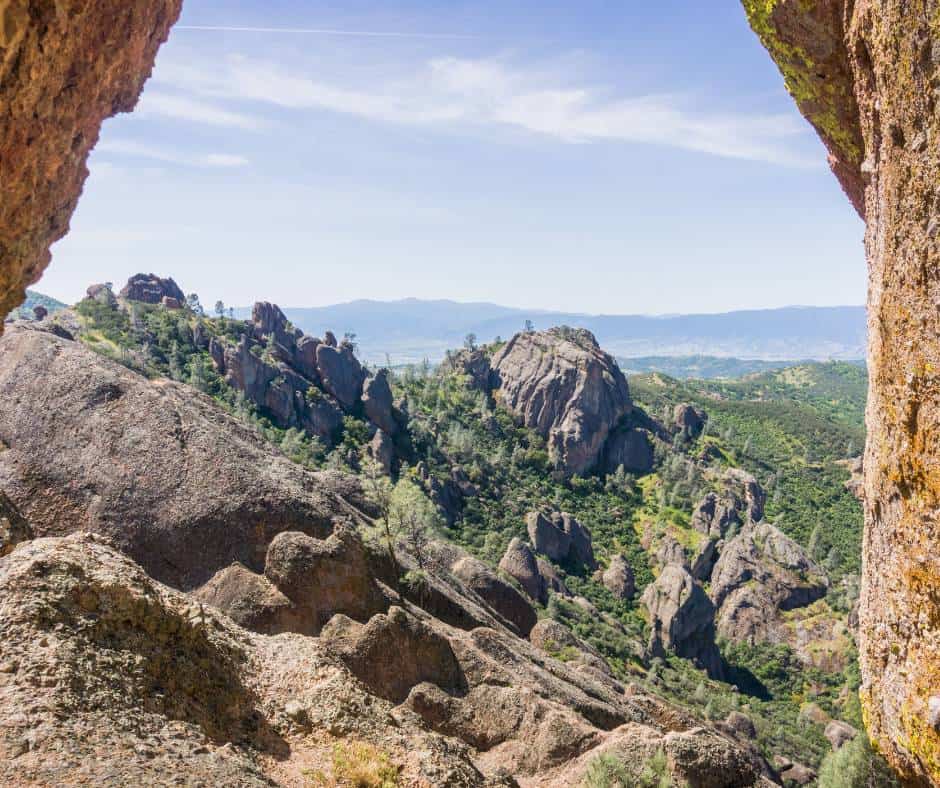
Distance from Los Angeles: 270 miles, about 5 hours
Pinnacles National Park is the newest national park in California, and while it doesn’t have the some wow factor that the Sierra parks have, it is still definitely worth a visit
Pinnacles is great thanks to its known for its four “C’s” – caves,climbing, camping, and condors.
There are two sides of the park, the west and east entrance, and there is no road that goes through the park connecting the two. If you want to explore both sides of the park on the same visit, you will have to go back to Hwy 101 and go around.
On the east side of the park, the Bear Gulch area is home to large talus caves that are formed by massive boulders. These caves are really fun to explore- bring a flashlight or head lamp- and will lead you up to Bear Gulch Reservoir. They are closed seasonally when bats are roosting, so check the park website before heading out becase they are definitely a park highlight.
If you are on the west side of the park, which is closer to the Bay Area, the 2.4-mile Balconies Cave loop is another cool talus cave to explore. As with the Bear Gulch Cave, flashlights or headlamps are necessary.
The High Peaks Trail is the premier hiking trail inside the park. It is a challenging 5.5-mile loop trail that takes you through the dramatic rock formations and rugged peaks of the eastern section of the park. Parts of the trail require the use of handrails or staircases carved into the rock.
As you hike the hills of Pinnacles, keep your eyes out for the rare California condor. There are only about 300 of these birds living in the wild so spotting one of these massive raptors is quite a treat. Some climbing and hiking routes can be closed during their nesting season.
Spend the night: The only lodging inside of Pinnacles is a campground that has tent sites, RV sites, and tent cabins.
Yosemite National Park
Distance from Los Angeles: 280 miles, about 5 hours to southern entrance
Yosemite National Park is the most popular park in California for good reason- it is truly one of the most places on the planet. Yosemite Valley is home to towering waterfalls, remarkable granite features like Half Dome and El Capitan, abundant wildlife, and pristine meadows.
Read about all the animals in Yosemite you might encounter.
Still, the Yosemite Valley can become a bit of a circus during the height of the summer. There are just too many people for my taste. I prefer to visit this portion of the park in the spring or fall.
If you do visit in the summer, you will find fewer people when you hikea couple miles or visit some of the other portions of the park.
Yosemite is home to three Sequoia groves and plenty of high Sierra backcountry to explore. You will definitely want to make time to explore Tioga Pass which has some great trails and cooler weather. Hetch Hetchy is another less-visited-but-still-worthy spot where you can hike near a reservoir to a waterfall.
Given the size and scope of Yosemite, I suggest that you plan on spend at least two to three full days exploring the park. But, I also know that sometimes schedules won’t allow for that which is why I put together this Yosemite in One Day itinerary if you are short on time.
There are so many great day hikes in Yosemite National Park that you won’t want to miss. They include trails to gushing waterfalls, verdant green meadows, and crystal clear waterways. Here are the 16 best easy hikes in Yosemite National Park.
